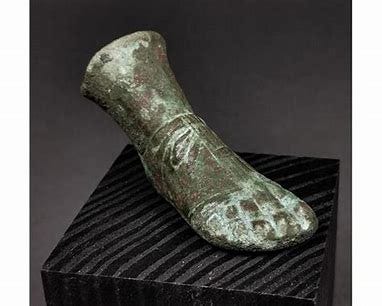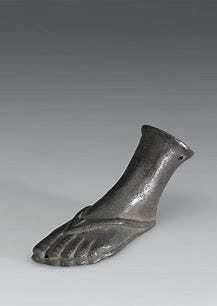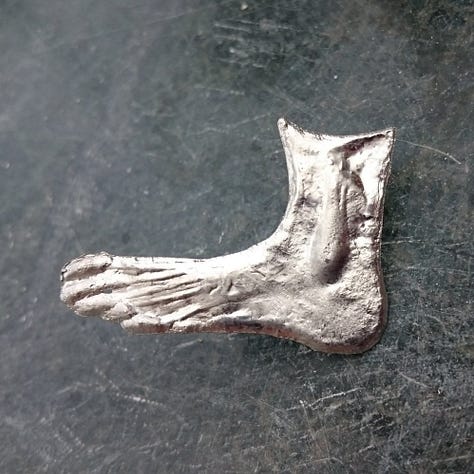It feels like a bad week to be sending out a book to agents that’s ostensibly about going for a walk. But that’s exactly what I’ve been doing. Tenderfoot, my narrative nonfiction work in progress, is about blue space and kinship care in both the present and deep time of a landscape. The narrative braids together personal essay with a history of the River Churn, which I walk, swim and wade along from its source to its confluence with the river Thames. Drawn home by the death of my father and my own worsening health condition, I seek solace in an embodied attachment to place and uncover forgotten Iron Age women's rites and rituals of care along the river offering a powerful meditation on land, legacy and belonging. Both elegy and call-to-action: a reminder that tending to one another, like tending to water, is urgent, intimate work. I hope Tenderfoot is deeply relevant now as we grapple with distinct but interconnected questions around our right to roam the English countryside, access to land and stewardship of the places we call home; kinship care for each other and the essential preservation of our wellbeing and fortitude in a time of environmental emergency and major geopolitical shifts; and how we journey through such challenging times, guided by learnings from ancient matriarchal cultures and contemporary scientific insight. Extracts from Tenderfoot have been published recently on Caught by the River and Oxford Review of Books.



So far, so what? I don’t think I need to rehearse the scandal that erupted on the weekend around journalist Chloe Hadjimatheou’s Observer investigation into Raynor Winn’s narrative nonfiction book The Salt Path – ‘a 630 mile walk to salvation’ that turns out to have been built on lies, deceit, embezzlement and desperation. Among the various beefs now being sliced, diced, minced and spiced in the discourse is the one around how we all knew something was up with the book (oh hindsight!), namely middle class people pretending to be homeless and – a more amuse/interesting bouche around ‘Moth’ quite possibly not being terminally ill after all - what The Sophist on Substack called the ‘convenient ableism of walking yourself back to health.’ It has been, as one astute pal from our Nan Shepherd WhatsApp said, ‘nature writing’s A Million Little Pieces moment.’
Why oh why did it have to be this past week that I finally got it together to seriously send out a submission package about a book describing a walk (Problem 1) and a book about chronic illness that won’t get better (Problem 2). I’ve been working on it for ages, why now, whyyyy?!
In fairness, putting the submission together has thrown up all sorts of interesting challenges that I’ve relished – around structuring the narrative arc, sequencing of material, the extent to which I chose to lift the curtain on my own privacy, the question of whether the tweaks and revisions that need to be made to make an actual book mean that the work drifts into autofiction rather than memoir (and who am I, middle aged perimenopausal west country woman that I am, to write a memoir anyway? I can answer that – because our voice matters) etc etc. But I fear that any proposal that comes through to an agent mentioning pilgrimage/walking as a theme right now will get dumped straight in the bin without a second look.
What’s more, the book doesn’t have a neat resolution – yes, I reach the destination (that’s no spoiler – and isn’t even the point of it all in the end anyway), but in the course of the journey I am diagnosed with an incurable, lifelong chronic illness called Post-Thrombotic Syndrome which I contracted as a result of getting a blood clot from Covid in 2021. It’s a very, very unsexy illness – it damages your major veins and makes your leg(s) swell up into giant, shiny purple and black sausages (my leg! I really liked my leg) that can be so painful it’s impossible to walk. When I go to the clinic, I am the youngest by at least twenty years, I’d say, surrounded by heavy smokers and people living with obesity. I have learned to manage it – sometimes, with neuropathic painkillers and thermal therapy and other things I won’t bore you with and in the good seasons you would never know I was sick – but other times it flares up and I’m stuck in bed and find it hard to get around for months on end. It won’t go away. And this is what a large portion of the book is about – learning to live with long term illness and disability, learning to live with uncertainty, learning radical selfcare, loving the imperfections and setbacks and finding courage and solace to endure the hard yards that will never end.
It is not a good sell to a publisher who wants a shiny, cathartic narrative arc that ends in redemption because there is no redemption – I have had multiple conversations with fellow writers and mentors about how to handle this in the submission package – how to make it ‘palatable’ (I don’t) and real all at the same time. The controversy around The Salt Path has only served to underline this challenge once more. Embezzlement and legal matters aside, what narrative choices did ‘Raynor Winn’ have to / chose to make in order to sell the actual book and how far from the truth was it really and - aside from the suffering the couple have allegedly caused to others - how much does it matter? Maybe a lot.
There are many articles already out there that I won’t repeat dissecting the ethical minefield this has thrown up. Pray, cross your fingers, throw salt over your shoulder, blow on the dice etc for me and my possibly doomed effort to get an agent in these tricky times. And if you know of any agents who are interested in ecopoetic, textured, deeply researched, future-thinking, non-cathartic and irresolute narratives send them my way will you? I’ve been in this game for long enough now that I’m not about to give up or anything STUPID like that. As I say, I am not the one with all the urbane hot takes on this Salt Path scandal, but I do have a lot of questions that you might be interested in thinking about too as you navigate the writing of your own book. So allow me to end on these and performatively embody the kind of messy irresolution chronic illness can often leave us with …
Is there a difference between truth and truthfulness in memoir or personal writing?
How do you navigate memory, bias, and narrative shaping?
Where is the line between crafting a compelling story and distorting reality?
Should writers disclose what has been changed or adapted in their work?
Can a work still be powerful and important if it turns out to be partly fabricated?
How does revelation of untruth affect readers’ trust?
Should writers be accountable to their readers for their life stories?
What might that accountability look like in literary terms?
What happens when the ‘truth’ of a book is challenged after publication?
Should publishers have safeguards and what would they be, or is that policing creativity?
If the publishing industry rewards certain kinds of stories, how can writers stay true to their experiences while still seeking publication?
How does the pressure to "uplift" or find resolution affect the way illness is portrayed in publishing?
What happens to messy, unresolved, or invisible experiences?
Is there space in publishing for stories that are bleak or non-redemptive? Will this latest controversy create the space? Obviously hoping so…
What advice would you give to a writer trying to write honestly about chronic illness but who fears their story won’t sell? Asking for a friend.



What a beautiful, thoughtful and tender(footed) piece of writing. All the luck in the world with the manuscript - walking will always matter and the ways we live and move through the world will always be important, scandal or no scandal xx
Love that I dip into substack for five minutes and there’s you on permission and Jeanette Winterson on living in language and for silence, and reams of Andrea Gibson. Good five (which rolled into twenty) minutes to be alive. Xxxx